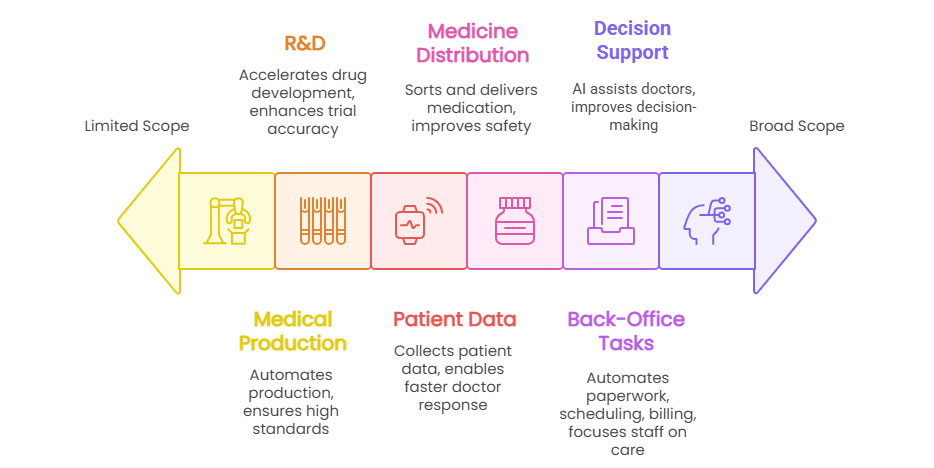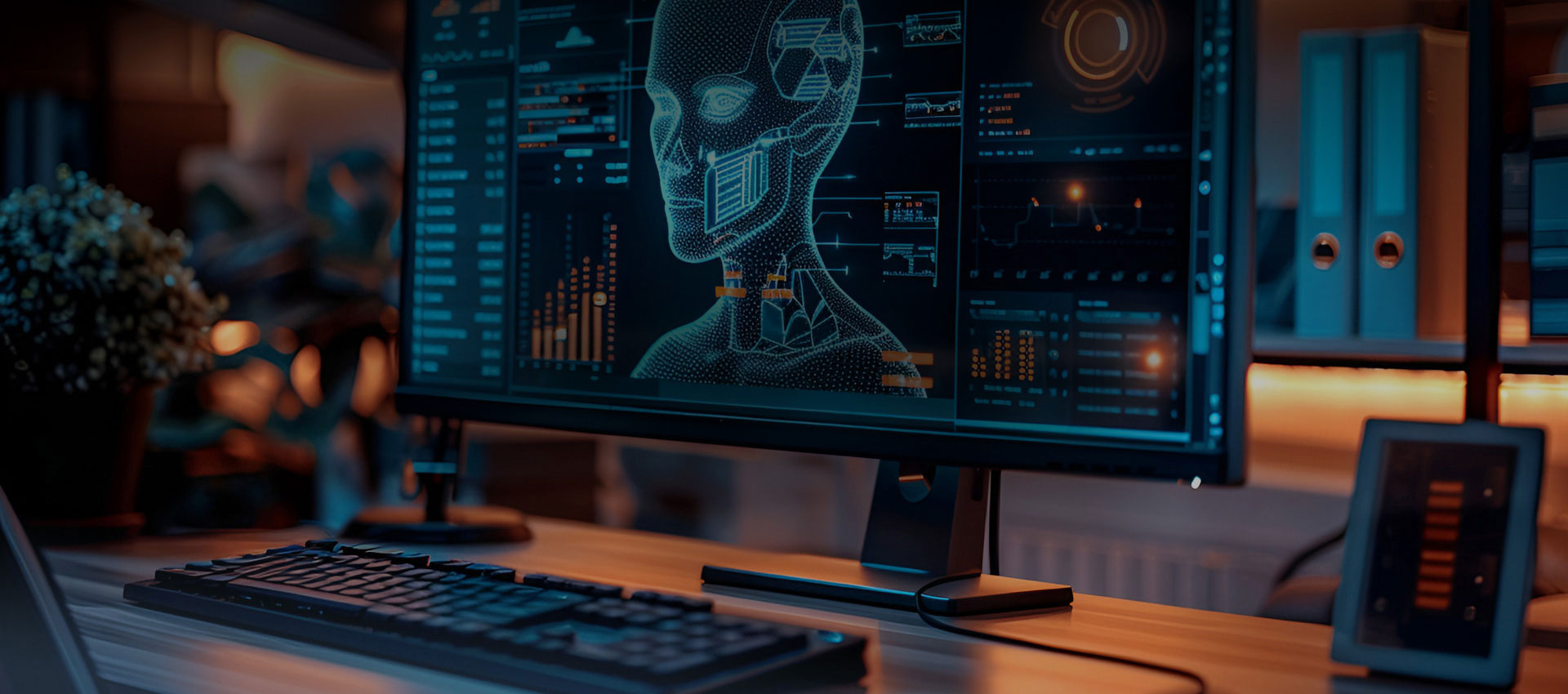
Expert Insights
Today, any industry that has implemented automation into systems has truly benefited from its revolutionary benefits. But many ask, how can we take practical directions for automation in the healthcare sector? With the increase in the number of patient populations, rising costs, and continuous work burnout, automation has become a necessity for this industry as well. In this article, we'll explore the true meaning and opportunities that automation in healthcare can provide us.

What Is Automation in Healthcare?
We often think of automation in healthcare as robots handling repetitive tasks. However, this is not the entire concept of automation. Automation in healthcare refers to the use of technology to perform tasks that require minimal to no human assistance. We can explain this in two ways:
● In a narrow sense, it is about the machines and devices we use to manufacture medical tools, drugs, or equipment. For example, robotic arms that assemble surgical instruments or automatic machines that package medicines.
● In a broader sense, automation in healthcare encompasses software and systems that facilitate diagnosis, patient care, billing, and data collection.
The goal is the same in both cases, which is to make healthcare faster, safer, and more effective so we can improve outcomes for patients and staff alike.
Key Takeaways
Here’s what you’ll take away from this article:
● Automation in healthcare can reduce errors and improve speed.
● It covers everything from manufacturing to patient care.
● Technologies like AI, IoT, and robotics are the driving forces.
● Robotic process automation in healthcare helps manage repetitive tasks, such as billing and administrative work.
● Healthcare workflow automation improves how tasks are assigned and tracked.
● Automation in healthcare enables staff to allocate more time to patient-focused care.
● Medical automation isn’t about replacing people but rather about supporting them.
What Technologies Are Involved in Healthcare Automation?
Automation in healthcare involves a diverse range of specifically designed technological solutions to reduce the need for humans in different processes. Let's have a closer look at these technologies that power medical automation.
● Artificial Intelligence (AI): AI can quickly read test results, spot health trends, and even suggest treatment options.
● Robotics: These are not just surgical robots. Robots can also clean hospital rooms, deliver medication, and help in labs.
● Internet of Things (IoT): Smart devices that track patient vitals, movement, and medicine intake all rely on IoT.
● Machine Learning (ML): ML systems learn from patient data and help make better clinical decisions.
● Cloud Computing: Safely stores and shares patient data across different departments and locations.
● Robotic Process Automation (RPA): This helps automate repetitive office tasks, such as managing patient records, processing insurance claims, and scheduling appointments.
The 6 Key Dimensions of Achievable Healthcare Automation
Based on ongoing trends, here are six key areas where we’re seeing real progress in automation in healthcare:

1. Medical Product Manufacturing Automation
In factories that manufacture syringes, bandages, and MRI machines, automation ensures that each item meets high standards. Machines can work around the clock. It improves output and reduces errors. This is medical automation in its clearest form.
2. R&D Process Automation
Research and development (R&D) in medicine is a time-consuming process. It often requires teams months of work to yield good results. By automating data collection, analysis, and testing, we can accelerate drug development and enhance trial accuracy. Robots and software tools now assist researchers with simulations and lab tests.
3. Patient Data Collection and Analysis Automation
Wearables, such as smartwatches or hospital monitors, continuously collect vital data. That data is entered into a central system, where software analyzes it for warning signs. As a result, doctors act fast and sometimes before a patient even feels unwell.
4. Automated Medication Management and Distribution
Hospitals are now using robots to sort, store, and deliver medication. Barcodes and smart lockers ensure that the right patient gets the correct dose at the right time. This reduces mix-ups and improves patient safety.
5. Administrative and Back-Office Process Automation
Medical workers often spend time dealing with medical paperwork can be overwhelming. This time should be utilized in tasks associated with patient well-being. Robotic process automation in healthcare facilitates appointment scheduling, insurance claims processing, and patient billing. It lets staff focus more on patient care.
6. Diagnostic Support and Decision-Making Tools Automation
AI-powered tools help doctors by reviewing scans, lab results, and patient history. These tools don’t make the final call, but they offer useful suggestions that help doctors make better and faster decisions.
CYG Automation Products and Healthcare Solutions

CYG(Changyuan Technology Group) has been steadily contributing to the field of automation in healthcare. Our specialized automation solutions streamline research and development processes of medical production consumables and biomedical applications.
This includes equipment for the automated assembly and testing of medical devices, so you get high precision and reliability in production. Our solutions are designed to enhance efficiency, minimize human error, and uphold stringent quality standards in medical manufacturing. If you wanna learn more about healthcare automation solutions, make sure to contact our team today!





